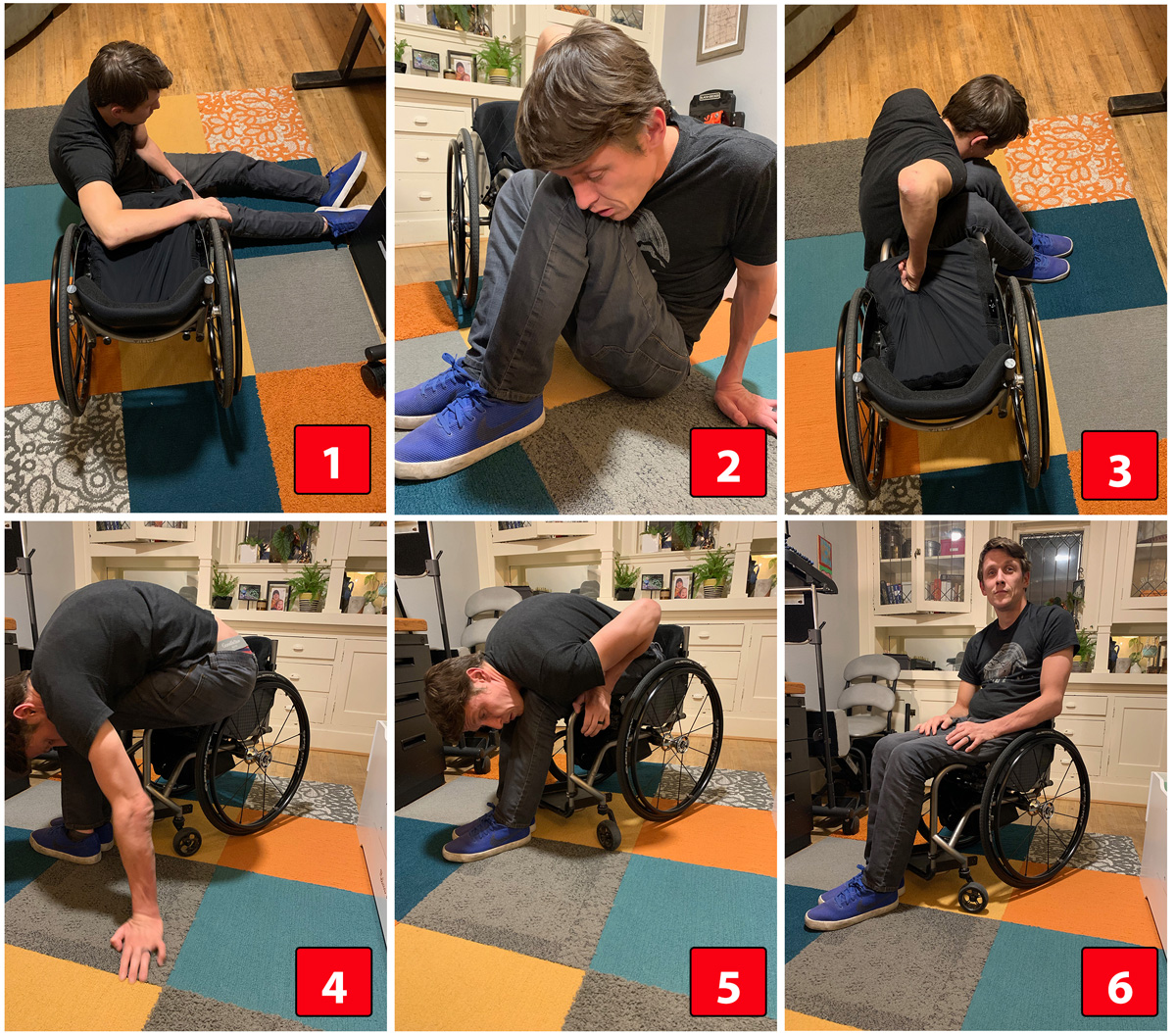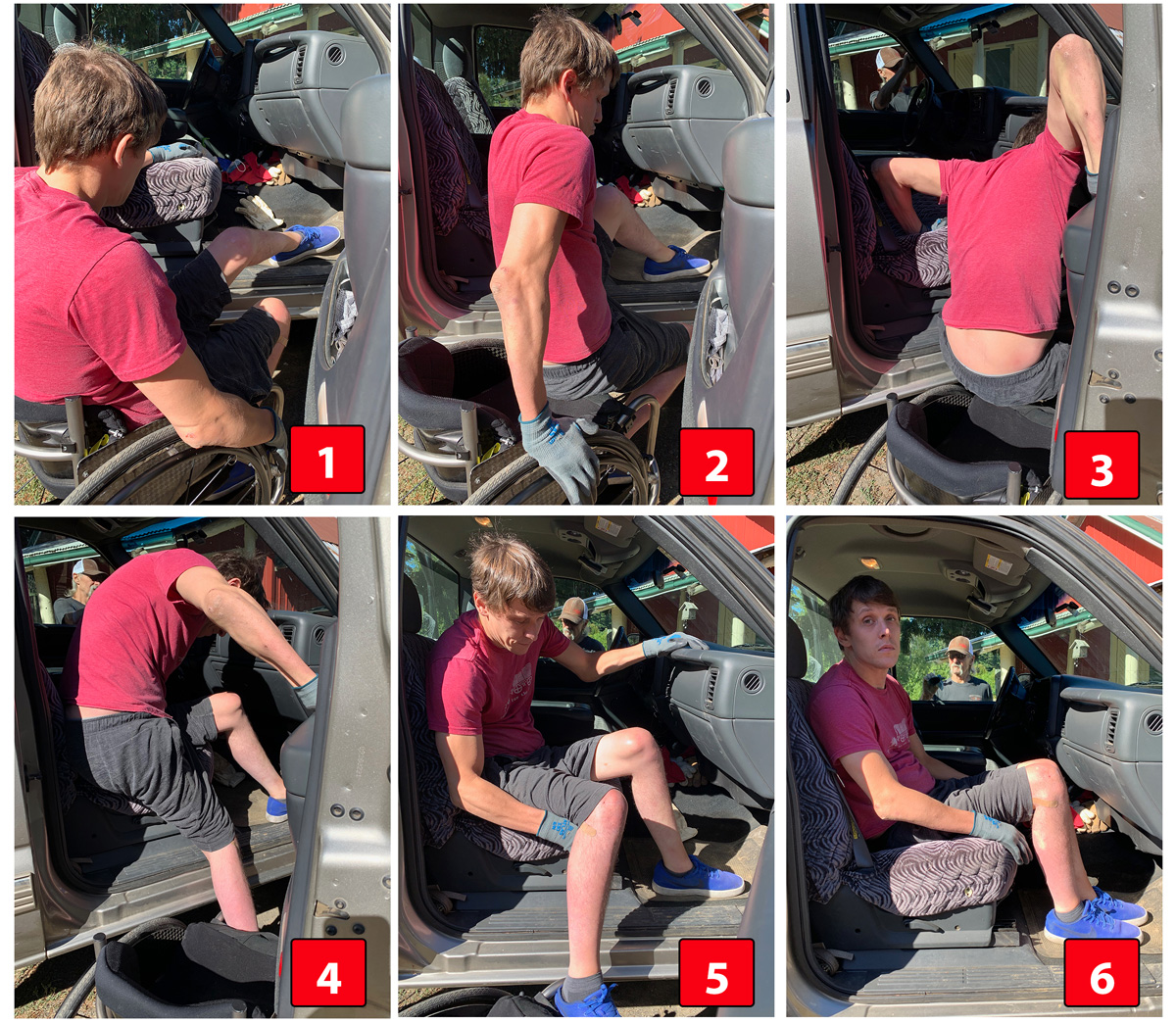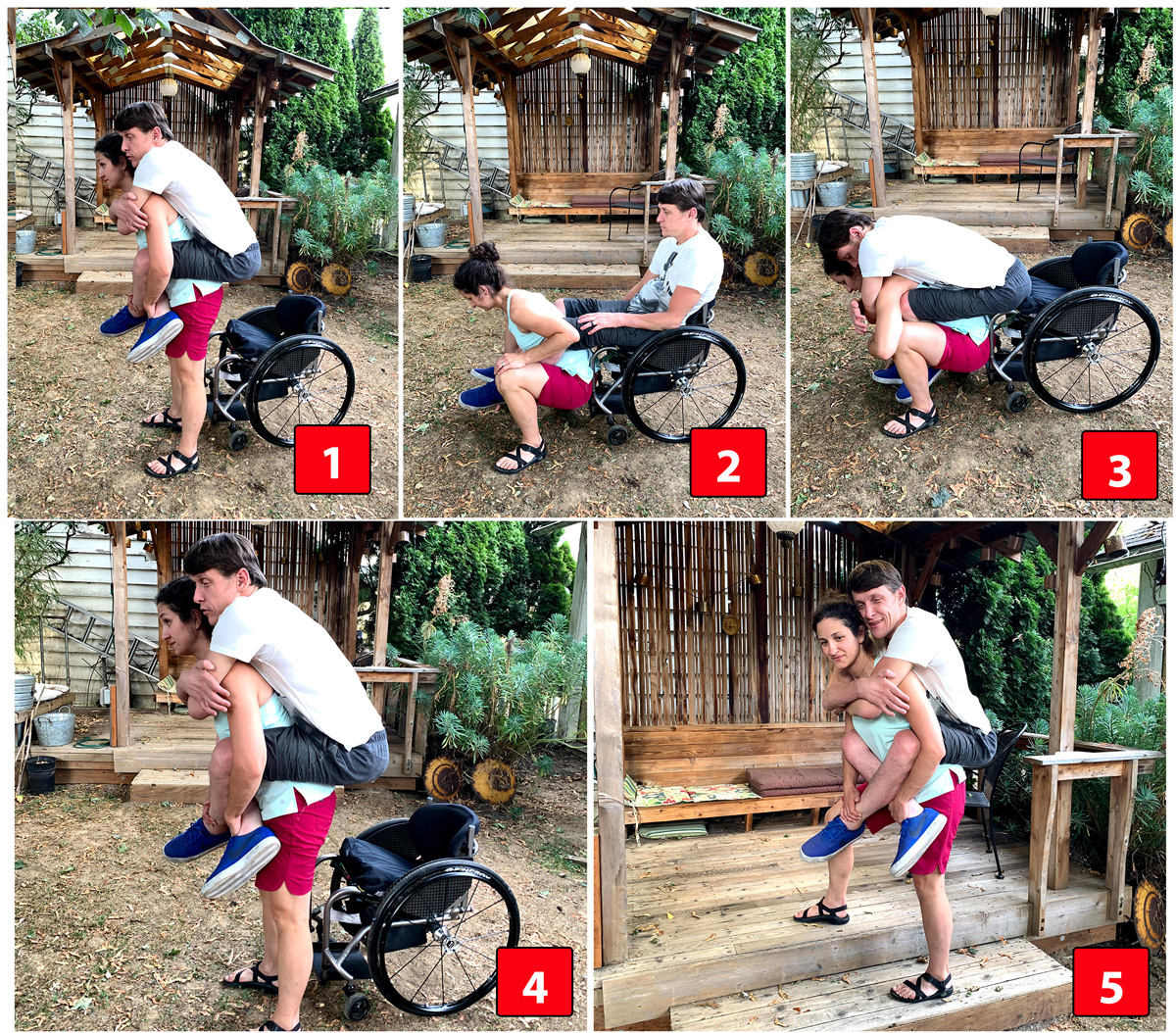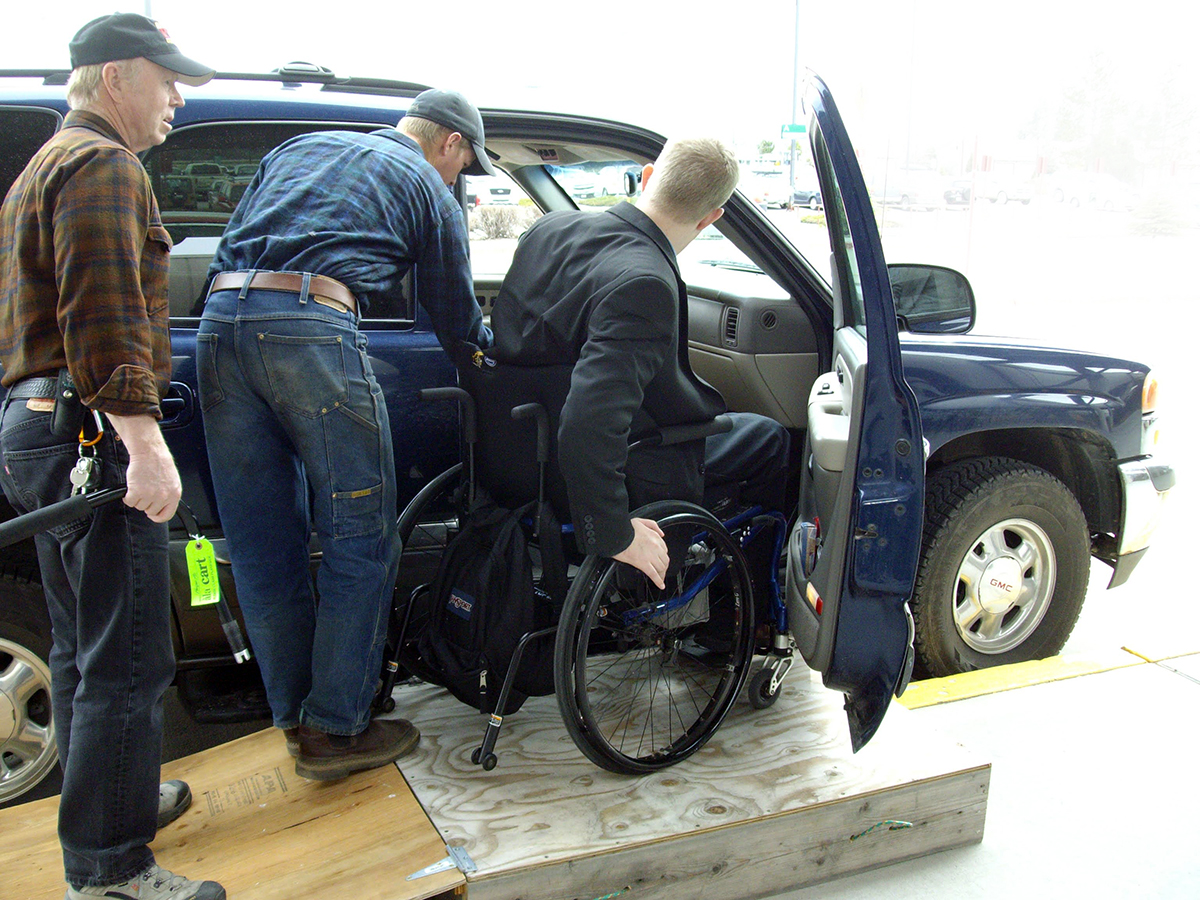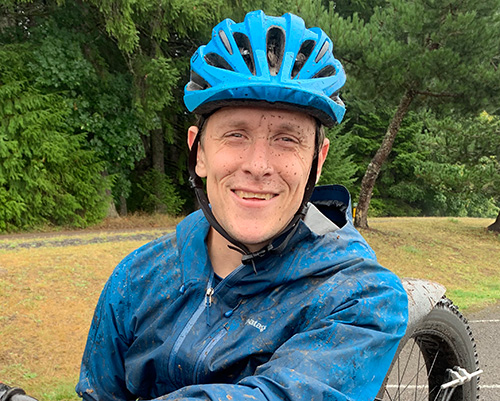 Hacking equipment to fit your life can be about modifying it to suit your needs, but sometimes it’s simply about getting your body into the right position to use it. There’s perhaps no skill that can better increase your access to the great wide world than mastering the tricky transfer. And while some transfers depend upon brute strength, getting the most out of whatever function you have often comes down to leverage, technique and, when you do need some extra oomph, communication. Here’s the no-trunk, no-grip cheat sheet for getting your body wherever you need it to. That said, NEW MOBILITY assumes no responsibility for tricky transfers gone wrong. Please use care and common sense, and build your skills slowly.
Hacking equipment to fit your life can be about modifying it to suit your needs, but sometimes it’s simply about getting your body into the right position to use it. There’s perhaps no skill that can better increase your access to the great wide world than mastering the tricky transfer. And while some transfers depend upon brute strength, getting the most out of whatever function you have often comes down to leverage, technique and, when you do need some extra oomph, communication. Here’s the no-trunk, no-grip cheat sheet for getting your body wherever you need it to. That said, NEW MOBILITY assumes no responsibility for tricky transfers gone wrong. Please use care and common sense, and build your skills slowly.
Floor-to-Chair
The floor-to-chair transfer is the key to opening up your world. If you can get on the ground and back in your chair again, you can get just about anywhere. Mastering this move helps build confidence because you can now try more transfers and other sketchy maneuvers, knowing that if something goes wrong and you wind up on the floor, it’s no big deal.
1. Starting on your butt with your legs out in front of you, pull your chair to the strong side of your body. It’s helpful to be able to transfer in either direction, but starting by transferring up to your strong side should be easier. If you have brakes, lock them now. If not, don’t worry — it’s still doable.
2. Pull your knees up tight to your chest. You want to position your knees so they’re in line with the wheelchair downtube closest to your feet. Your outside leg may want to splay away from your body. You can either turn your heel away from your body, or you can bend your head forward and use your chin to push your knees into your downtube and hold them in place, which is my preferred method. What I like about the latter is that it also puts you in a good position to start the transfer.
3. Put the hand of your strong arm on the midpoint of the forward-most edge of your wheelchair cushion. Those with good hand function may prefer to grab the frame tube in front of their cushion instead. I close my hand into a fist, as it’s easier on my wrist and lets me lift my butt just a little bit higher. Put your other hand just behind your butt. If you have weak triceps, externally rotating this arm can help to lock out your elbow, letting your shoulder take over more of the lifting.
4. With a smooth, rocking motion, start by pushing forward and up to lift your butt off the floor. Your head shouldn’t come up with it — instead it should stay roughly at the height of your knees. As your butt comes up toward the height of your cushion, push it toward your chair with your lower arm. If you don’t have brakes, pull your chair under your butt as you’re lifting. You’re aiming to land your butt far enough back on your cushion that you don’t fall out of your chair when you try to sit up.
5. Take a moment to move your feet into a solid position on the floor in front of your chair. If needed, push off your downtubes to wiggle your butt farther back into your chair seat.
6. Using the tops of your caster housings and the downtubes, walk your hands up your frame to push yourself back into a seated position. Pull your feet back onto your footplate, adjust your hips and you’re rolling.
The High Vehicle Transfer
In some ways, the high vehicle transfer is a brute strength exercise. There’s no good way to get your feet into a similar position as a floor-to-chair transfer to provide leverage points. And sticking your head down while transferring up into a high seat is liable to leave you, well, on your head. Still, there are a few things you can do to make the process easier.
1. Lock your brakes or have someone hold your chair. Lift one foot up onto the floor of the vehicle. If the vehicle seat is really high (or you have short legs), you can leave the other foot on your footplate to get some extra leverage.
2. Scoot your butt out to the edge of your seat. This gives you better access to the door and vehicle seat. Plus, if you have some dump in your wheelchair, it sits you up a few inches taller, giving you a little better leverage and less distance to lift yourself.
3. If you don’t have good enough grip strength to grab the roof handle and pull yourself in, the iron cross move is about your only option. The best way for me to get good leverage is to pull the vehicle door tight to my body. Play with hand position and arm angle until you find a combo the doesn’t put funky torque on your shoulders. If you have any weakness in your deltoids or shoulder stabilizer muscles, do yourself a favor and ask whoever is driving to help with at least the initial lift by grabbing your belt or the back or your pants.
4. As you get your butt up at seat height, use your inside arm to pull yourself over onto the seat. With your hand still in the door, wiggle your butt back into a secure position on the seat.
5. Lean into the vehicle so you can move your hand off the door without falling on your face, then scoot your butt farther in. Sit up and lift your outside leg in.
6. Woo, ready to go (yes, this is my excited face). Ask Pops to stop cleaning sap off the windshield and throw your chair in the back.
The Piggy Back
I know a C6 complete quad with no triceps function who has ridden on friends’ backs up flights of stairs to a fire lookout station and down forest trails to find the perfect fly-fishing spot [see below]. I’ve had Kelly piggyback me along the Great Wall of China and around Machu Picchu [see youtu.be/_A4kPpGWCas]. To get some places, you really just need a strong pair of legs. Here’s how to borrow someone else’s.
1. Either lock your brakes, or back up into a wall. Pull your legs off your footplate and spread them so your feet are wider than your casters. Scoot your butt out as far to the edge of your seat as you can.
2. Have your sentient exo-skeleton kneel down with their back against the front of your chair. Have them grab your ankles and pull your legs over their thighs, wrapping them around their hips.
3. Put your arms over their shoulders, lean forward and let your butt slide off your seat and onto their back. It’s going to be easiest for them to stand up if they lean forward to get out of their deep squat — this is going to feel weird and it takes some trust.
4. To make the process easier, they can cross your feet over each other in front of their hips and secure your legs with one hand, leaving the other free to stabilize themselves — super helpful for the initial standup and when hiking on steep or uneven terrain.
5. Hold on. Once you’re up, they can do a mini-jump to hike your hips farther up. The higher you are, the easier it is to maintain your grip around their shoulders and for them to maintain good balance. Take a moment to give a little FU to the doctors who said you’d never walk again.
.
The No-Triceps Guide to Transfers
To get some perspective on ways to make transfers easier when you don’t have the strength to do them on your own, I spoke with Jake French, a C6 quad with no triceps function. Pre-pandemic, French traveled a lot for his job as a motivational speaker. With good transfer skills, he and a single caregiver can navigate inaccessible Ubers, tall hotel beds and tight bathrooms. He also loves the outdoors and spends a lot of time driving off-road utility vehicles, fishing and hunting. Here are a few of his tips for transferring with a minimum of function.
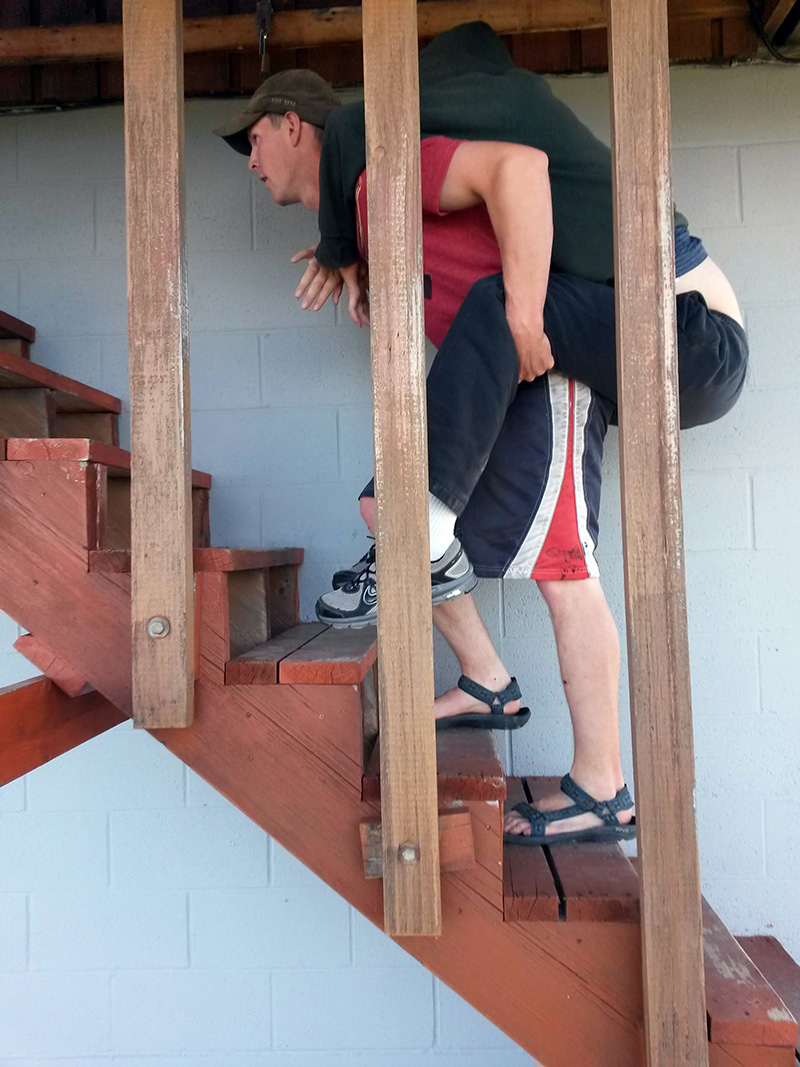
French borrowed his brother’s legs to get up the many steps to a fire lookout station for a memorable night’s camp.
1. Communication is key. People want to help but usually have no clue on proper mechanics. It’s your job to educate them. Get good at explaining how your body moves, and where someone can grab to help lift and where they shouldn’t. Giving a countdown (1, 2, 3, lift) may sound cheesy, but making sure you and your helpers synchronize your efforts is key to a successful transfer. Make sure you are the one counting.
2. Slow isn’t the way to go. When you don’t have a lot of strength, rocking forward and transferring in one fluid hopping motion is often more functional than trying to do a slow lift.
3. Be selective with ride-hailing vehicles. When booking typical Uber and Lyft service, you can’t pre-select exactly what kind of car you want. But if you book a ride and see that the driver’s vehicle is too tall or otherwise won’t work for you, don’t be afraid to cancel and hail another ride, hopefully with better results. Typically, you have to cancel within the first few minutes of booking or Uber will charge a fee, but French has had success appealing the cost.
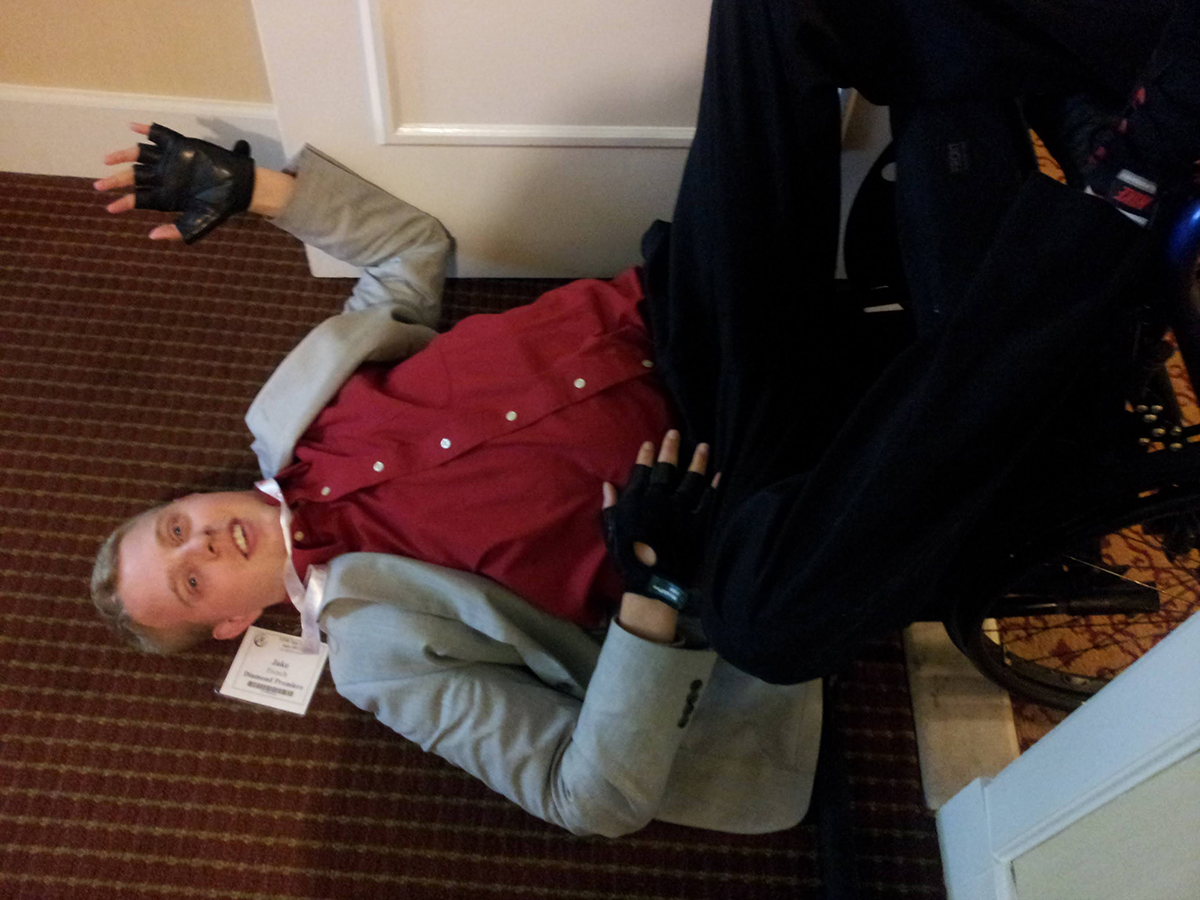
Sometimes the easiest way to get back up is to stay in your chair, giving helpers something solid to leverage.
4. Reconsider the transfer board. Typically, experienced gimps think of transfer boards as something to be ditched as soon as possible. But when you’re dealing with tricky surfaces that aren’t level, a transfer board can mean the difference between a single person helping and a two-person heave-ho. French recommends a board called the Ultraslick, which as you might guess, has a surface that’s easy to slide across. He uses a long, 27-inch model that can span larger gaps.
5. Let go of the ego. Sometimes helping in the transfer is the best method, but other times, letting a strong friend do the heavy lifting is easier for everyone. The carry-the-bride-across-the-threshold move and a piggyback can get you all sorts of places you wouldn’t be able to otherwise.
** This post was originally published on https://www.newmobility.com/2020/09/tricky-wheelchair-transfers/


